
4 BELIEVE CAMPAIGN: DIGGING INTO ACT I

6
ACT II: MOVING FORWARD
8 FROM PAGE TO STAGE: DRACULA
12 THE HISTORY BEHIND THE MYSTERY
14 WHODUNIT?
18
DENIS JONES: CHICAGO


4 BELIEVE CAMPAIGN: DIGGING INTO ACT I

6
ACT II: MOVING FORWARD
8 FROM PAGE TO STAGE: DRACULA
12 THE HISTORY BEHIND THE MYSTERY
14 WHODUNIT?
18
DENIS JONES: CHICAGO
We named our 2019/20 season “Razzle Dazzle” to capture the magic and adventure that we have in store for our audiences this year. Building a season at the Maltz Jupiter Theatre (both figuratively and literally) takes a lot of creativity and elbow grease. We spent the summer creating and constructing, reimagining and renewing, preparing to bring audiences something bigger and better than what they’ve seen on our stage before.
We began from the outside. As the first phase of our Believe Capital Campaign, we transformed our parking lot and installed new LED marquees to welcome patrons with a fresh and modern experience.
Inside the Theatre, work on our first production, Dracula: A Comedy of Terrors, began in early 2019 at our ARC New Works Theatre Festival. Writers Gordon Greenberg and Steve Rosen led a week-long workshop with actors and designers, laying the groundwork for the world premiere of their imaginative new comedy on our stage.
In this fall edition of the 2019/20 Season Marquee Magazine, you will get a glimpse of how we are constructing our season for you. It takes a dream and a plan to build a production, and I hope you will enjoy learning what inspires us, what drives us, and how we are achieving our goals.
Editorial Director Dana Munson
Creative Direction Kris Velazquez
Editor/Senior Contributor Alex Chimienti
Contributing Writers Linnea Bailey, Alexandra Evans, Cecilia Padilla, Laurie Stanton
Photography Jeffrey Barry, Jason Nuttle, Matthew Murphy, Evan Zimmerman
Styling Jody Formica
Hair and Makeup Michelle Winters, Kacey Murphy
Production Shonna Rash, John McDermott, Casey Blanton, Chip Vaughn, Brittani Seach, Hannah Roessler
Production Assistant Janie Willison
Printing Preferred Printing & Graphics
Andrew Kato
PRODUCING ARTISTIC DIRECTOR/ CHIEF EXECUTIVE
Andrew Kato, Producing Artistic Director/Chief Executive
Maltz Jupiter Theatre Board of Directors W. Scott Seeley, Chair | Robin B. Smith, Vice Chair
Milton Maltz, Chair Emeritus Martin Cohen, Chair Emeritus Robert Sachs, Chair Emeritus
Richard L. Barovick, Lynn Bovenizer, Doug Brown, Eileen Daly, Debra A. Elmore, Jack Farber, Isanne Fisher, Nancy Gilbane, Paul A. Goldner, Roberta E. Golub, Roe Green, Rodger H. Hess, Richard J. Katz, Jr., Brett Langbert, Tamar Maltz, Karen T. Marcus, Hans Mautner, William I. Morton, Sally B. Neff, Bonnie Osher, Alceste Pappas, Janis Ruan, Susan Namm Spencer, Salvatore A. Tiano
Marquee is published by Maltz Jupiter Theatre, 1001 E. Indiantown Rd., Jupiter, FL 33477 twice a year



by LAURIE STANTON
Welcome back to the Maltz Jupiter Theatre! By now, the bulldozers have gone, the asphalt is flat, and the landscaping is lush and green. But just a few weeks ago, crews feverishly worked to complete Act I of our Believe Capital Campaign buildout.
Our groundbreaking ceremony and season-end event took place on April 15, 2019. Over 150 patrons, donors, board members, and city officials joined us as we celebrated the end of a successful 2018/19 season and the start of the Theatre’s largest undertaking to date. It was truly an honor to see so many guests come out in support of our plans for the future.
From there, it was all hands on deck for the next five months, as crews from Gilbane Co., Hardrives, Inc., Meisner Electric, and many more worked to complete the scheduled repairs by the time patrons returned for the 2019/20 Season. Now, when you arrive at the Theatre, you are greeted by a completely redesigned and resurfaced parking lot, which allows for easier maneuverability and additional spaces for our patrons.
Our Goldner Conservatory of Performing Arts (COPA) traffic will also see improvements with a new curb cut on the east side of the building. This allows parents to drop off more easily, ensuring students can quickly get through the COPA doors and into class!
Now, as our 2019/20 season kicks off, we look toward completing fundraising for Act II and all the amazing renovations planned. An expanded stage, heightened fly tower, an exclusive café, and more await you in the coming years.





Tuesday, November 12, 2019
Maltz

by ALEXANDRA EVANS
Fittingly, the buildout of the Believe Capital Campaign follows the traditional structure of a three-act play. As the first act of a production sets the stage for what is to come, Act I of the Believe buildout established the foundation for Act II: construction began, permits were secured, and detailed buildout plans were drafted.
With those aspects in place, Act II is set to introduce the first major “plot point”: the extensive renovation of our production facilities. Audiences will reap the benefits of a more visually stimulating experience with the expansion of our stage. While maintaining the intimate nature of the house, these modifications will allow us to mirror the configuration of a Broadway stage, enticing producers to incubate the next Broadway-bound, smash hit production right here in sunny south Florida.
Behind the scenes, production facilities will grow to three stories. Our efforts will see the costume shop brought back onsite (saving the Theatre thousands of dollars annually in the process), as well as the creation of a prop shop, wig shop, production offices, and additional dressing rooms to accommodate larger casts. Performers will appreciate the expansion of the main rehearsal hall which will replicate the size of the stage as well as the addition of new vocal and dance studios.
Lastly, a new dining and entertainment venue, Scene, will entice patrons with cabaret performances, live music, and refreshments before and after performances. This addition will provide a convenient dining option for patrons, create additional revenue for the Theatre, and support local artists.

by ALEX CHIMIENTI
Bringing a new work to life is an intensive process that starts with a blank page and endless possibilities. In an interview with Gordon Greenberg (Writer/Director) and Steve Rosen (Co-Writer) of Dracula: A Comedy of Terrors, we dive into their processes to learn more about what goes into the creation of a world premiere.
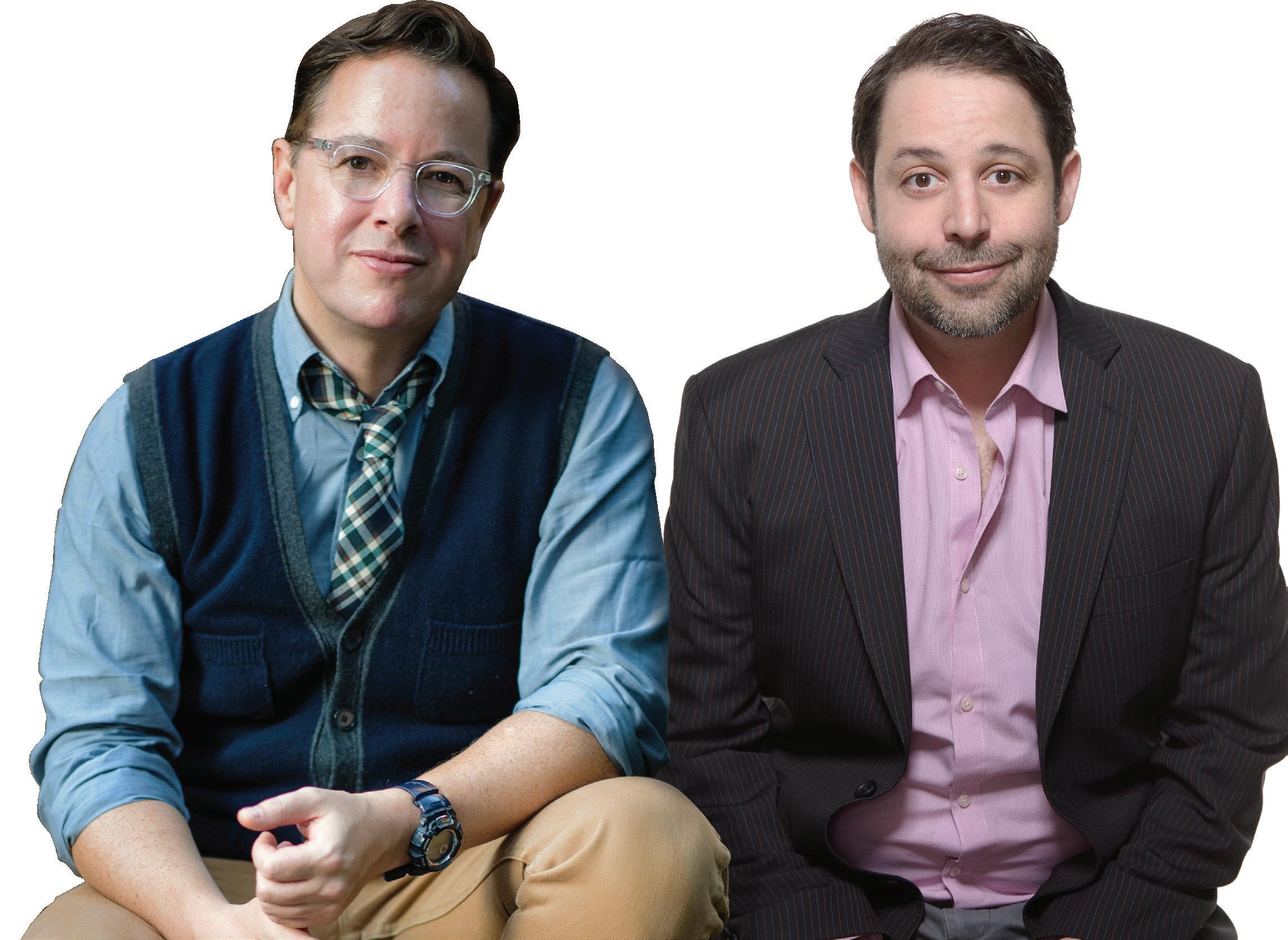
HOW DID THIS PROJECT COME TO BE?

GORDON G.
“With Andrew Kato’s support and the promise of a developmental workshop through the ARC New Works Theatre Festival, Steve and I sat down and started dreaming up the comedic, theatrical, and altogether insane world that would become Dracula: A Comedy of Terrors. Andrew read the first draft, and within a day he called and said that he wanted to include it as a full production in the next season.”
STEVE R.
“For years Gordon has been singing the praises of the Maltz Jupiter Theatre and of their artistic director Andrew Kato. Having directed at the Maltz numerous times, Gordon told me that Andrew had an idea to do a fresh comedic take on Dracula and wondered if we wanted to take a…forgive me…stab at it.”
WHAT IS YOUR WRITING PROCESS LIKE?
GORDON G.
“I suppose we trick ourselves into letting our imaginations flow freely, so as not to self-edit, and then somehow find the sense to organize it into a dramaturgical bento box that creates a narrative shape. We always start with the kernel of an idea that drives the play. Why this story? Why these characters? Why now? In the case of Dracula, we were both moved by the idea of mortality and how the acknowledgment of it can help us live more fully and with greater awareness and appreciation.”
STEVE R.
“In the case of Dracula: A Comedy of Terrors, we were using Bram Stoker’s novel as a guide but felt the source material had more mood to it than actual plot. This allowed us the freedom to create a fresh take on a classic vampire story, one that resonated with us and felt contemporary despite its gothic setting.”
GORDON G.
“We are very fortunate in that we love one another’s company, so going to work means hanging out with a friend. We bounce ideas back and forth, and one of us laughs - or doesn’t - and we know if it’s worth keeping or not. We try to strike a balance between allowing ourselves to dream and becoming our own harshest critics.”
STEVE R.
“Gordon and I come from similar backgrounds. Both of our fathers are recently retired pediatric dentists! We generally do everything together, sitting in the same room. We’ll project the script from a computer onto the TV and one of us will type. Eventually though, we always wind up taking a break and walking to the deli on 54th and 9th so Gordon can get a fresh turkey and swiss sandwich.”
GORDON G.
“Most new work is developed through readings, with actors at music stands. But a lot changes when it takes on fully dimensional life, with sets, costumes, lights, and fully fleshed out performances. On top of that, we are working with Skylar Fox ( Harry Potter and the Cursed Child) to integrate stage illusions to heighten comedic, poetic, and suspenseful moments. And making magic takes trial and error - and time.”
STEVE R.
“When putting up a world premiere of a new play, it’s extremely helpful to have all the extra time you can get. It will be the first time we add lights and sets into the mix, as well as costumes – and boy does our cast wear a lot of costumes. The five brilliant actors literally transform into dozens of people before your very eyes and that means a lot of chaos to organize backstage.”

by ALEX CHIMIENTI




s the lighting eerie enough? Does the character’s costume declare bravery or caution? Should Dracula’s bite be comical or shocking? Not one detail, from the timing of booming thunder to the subtle dimming of a spotlight is taken for granted. In a series of interviews, the designers of Comedy of Terrors shared what it’s like to pull off the impossible and how their work comes together to form one coherent story.



DESIGNER “I ask myself and the people on my team four questions: first, why does this play matter to you? For the director and writers, what are their priorities in producing Dracula? Second, what are moments that emphasize these themes or ideas? Third, how could magic enhance these moments? Fourth, the practical question, how do we do it? You don’t want it to pull energy away from the purpose of the play but to push more energy in the direction of it.”
“Textiles, nature, pop culture, traditions, history, and emotions all play a large part in how I approach a character’s clothing. Every day we decide what we want to say about ourselves, and put that costume on and go. We do it subconsciously, but we do it nonetheless.”
ROB DENTON | LIGHTING DESIGNER “A lot of it is visualizing. I can picture how the light feels in those moments, how it feels on the actor’s face, on Dracula’s skin. What’s their background, is it clear or is it murky? Is there a sense of the unknown death, the beyond? What do I need to light, what do I need the whole world to feel like?”










| COMPOSER AND SOUND DESIGNER “I work with associations to something you already know or a type of genre you know. I can come at it from the 1920s Bela Lugosi, Nosferatu kind of Dracula trope or the comedy level of something like Young Frankenstein. What I’m trying to do is establish what expectation an audience is going to have going in and do I feed into that expectation or go against it?”
by ALEX CHIMIENTI
HOW DOES YOUR WORK ENHANCE THEIRS AND VICE VERSA?
SKYLAR FOX | “I don’t want to give too much away about Dracula but we’re already having some really curious conversations about quantity of petty coats and skirt size in the costumes to be able to pull something off which is never something I thought I’d have to talk about to pull off a magic trick.”
TRISTAN RAINES | “We are constantly meeting or emailing about ideas. If the scenic designer picks a flooring of a specific texture, that impacts how the shoes are rubbered or felted. Say the walls are green, do I use colors that compliment or clash? Do I want the audience to dislike this dress in that room or should it feel harmonious?”
ROB DENTON | “The physicality of the set particularly really influences the lighting world because it dictates where the lighting is going, what it’s going to hit, etc. We can hide illusions by getting the audience to look over here. On TV or film, the camera is what guides your eye. In theatre, the lighting designers are the ones to direct the audience’s attention.”
VICTORIA DEIORIO | “When you’re dealing with comedy, a lot of sound can be punctuation for hilarious moments, like the biting of the neck or the turning into a bat and flying away. All of that stuff should have some sort of sonic or aural sound associated with it when it happens.”



















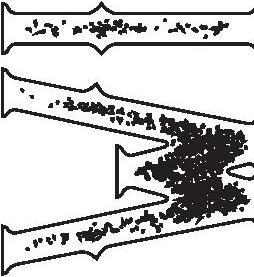


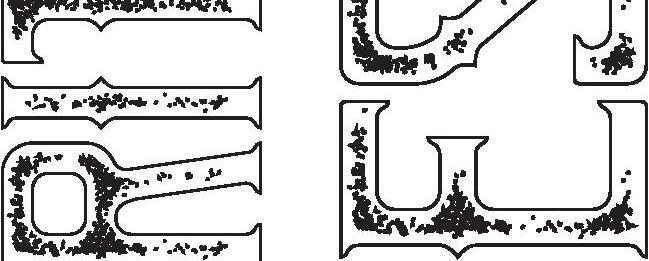








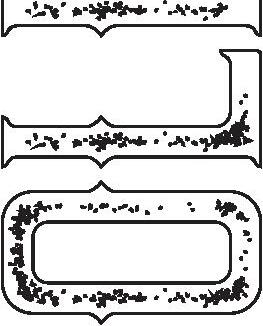









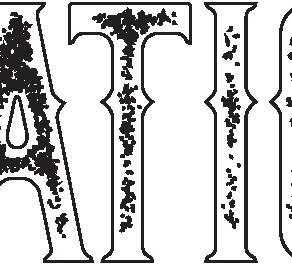










By Cecilia Padilla
Written and composed by British-American songwriter Rupert Holmes in 1985,


The Mystery of Edwin Drood is considered the first Broadway musical to feature multiple endings determined by an audience vote. This unique approach to audience participation is embedded in the nature of the musical’s work of origin, Charles Dickens’ final novel of the same name.

































As was common of Dickens’ novels, The Mystery of Edwin Drood was published in installments beginning in 1870. Unfortunately, Dickens died of a stroke later that same year before the novel was complete. His lack of notes on the novel’s ending was even more disconcerting, as it was Dickens’ nature to plan a novel in its entirety before beginning a literary project. Many authors and playwrights have attempted to write endings to the plot, resulting in several versions of the novel, various musical adaptations, and three film productions.






















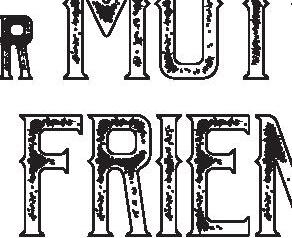







Holmes’ specific adaptation of the novel into a musical morphed the typical bleak Dickensian style associated with the British author into a pantomime. Holmes was particularly intrigued by the British musical hall genre, which he experienced in his early childhood living in England. He attended a modern pantomime performance at a young age and was fascinated with the raucous characters and satirical music. He particularly enjoyed the pantomime’s encouragement of audience participation, use of archetypal characters, the concept of ‘a show within a show,’ and the convention of the ‘principal boy,’ the young male protagonist of the play traditionally played by a young actress in boy’s clothes. This is exemplified in the character of Edwin Drood, who is played by a young woman.
At 11 years old, Holmes discovered Dickens’ unfinished novel and carried his love for British mysteries and pantomime into adulthood. In combining the two genres, Holmes created a musical that requires the actors and musicians to memorize multiple endings and be prepared to perform any of them at a moment’s notice.


The Mystery of Edwin Drood originally premiered as part of the New York Shakespeare Festival and then transferred to Broadway for a two-year run. The musical enjoyed two subsequent national tours and a production in London’s West End. It was nominated for eleven Tony® Awards in 1986 and won five. Today, Rupert Holmes is one of few theatre artists to be the sole creator of a production’s music, lyrics, and book.










































The stakes are high when putting on a show as infamous as Chicago. Two time Tony®-nominated Denis Jones is ready to bring the razzle dazzle needed to tango with this jazz age masterpiece. In an interview with the mastermind behind it all, we explore his process for pulling off this timeless spectacle.
QWHERE DO YOU BEGIN WHEN YOU ARE VISUALIZING THE DIRECTION FOR A SHOW?
Chicago is a unique project for me because I was an original company member of the show’s 1996 Broadway revival. I know the show intimately, and truly feel that it is such a perfectly-written musical. It’s a great pleasure and honor to be creating a new production for the Maltz Jupiter Theatre. One of the wonderful opportunities of working at a theatre like this one is the chance to expand on the physical aspects of the production. For example, whereas the Broadway set was very simple and sleek, our production is going to be quite a bit more lavish. Our scenic designer, Adam Koch, has created a world that not only acknowledges and celebrates the show’s time period, but also has a very modern feel to it, as well – which I think is very much in line with how the musical is written.
WHAT INSPIRES YOU? WHAT’S YOUR FOCUS?
My focus is to serve the score and script. Chicago is a very timely and relevant story, told with such wit and humor. I am very much in service to the original writers who crafted such a work of genius, but am also there to create a production that is new. When people see our production, I want it to be a unique experience; a production that was created exclusively for the Theatre’s audiences.
WHAT WILL MAKE YOUR VISION FOR CHICAGO
One feature that is always very important to me with musicals – particularly one with a score as strong as that of Chicago – is to make sure that the show’s dancing is prioritized. I’ve hired incredible dancers for this production, and I am making sure that the musical’s other elements (such as costumes and scenery) are designed to support the dancing.
WHAT ANGLE ARE YOU APPROACHING THE WORK WITH?
One of the things that’s so brilliant about Chicago is that it’s a period piece that is based very loosely on an actual incident – but yet it remains timeless in its examination of the cult of celebrity in America. It literally jumps off the page and feels incredibly relevant at this moment that we are living in. This production will have solid footing in both the past and in how this musical speaks to modern audiences today.




Allegra Muilenburg current student at Goldner Conservatory of Performing Arts


The Maltz Jupiter Theatre is one of Florida’s preeminent not-for-profit professional theatres, whose mission is to entertain, educate, and inspire our community. Currently the state’s largest award-winning regional theatre, the Theatre draws nearly 100,000 people annually, serves a subscription base of more than 8,200 and has world-class facilities in support of its Goldner Conservatory of Performing Arts, which serves hundreds of youth and adults. The Theatre is a member of the prestigious League of Resident Theatres.
